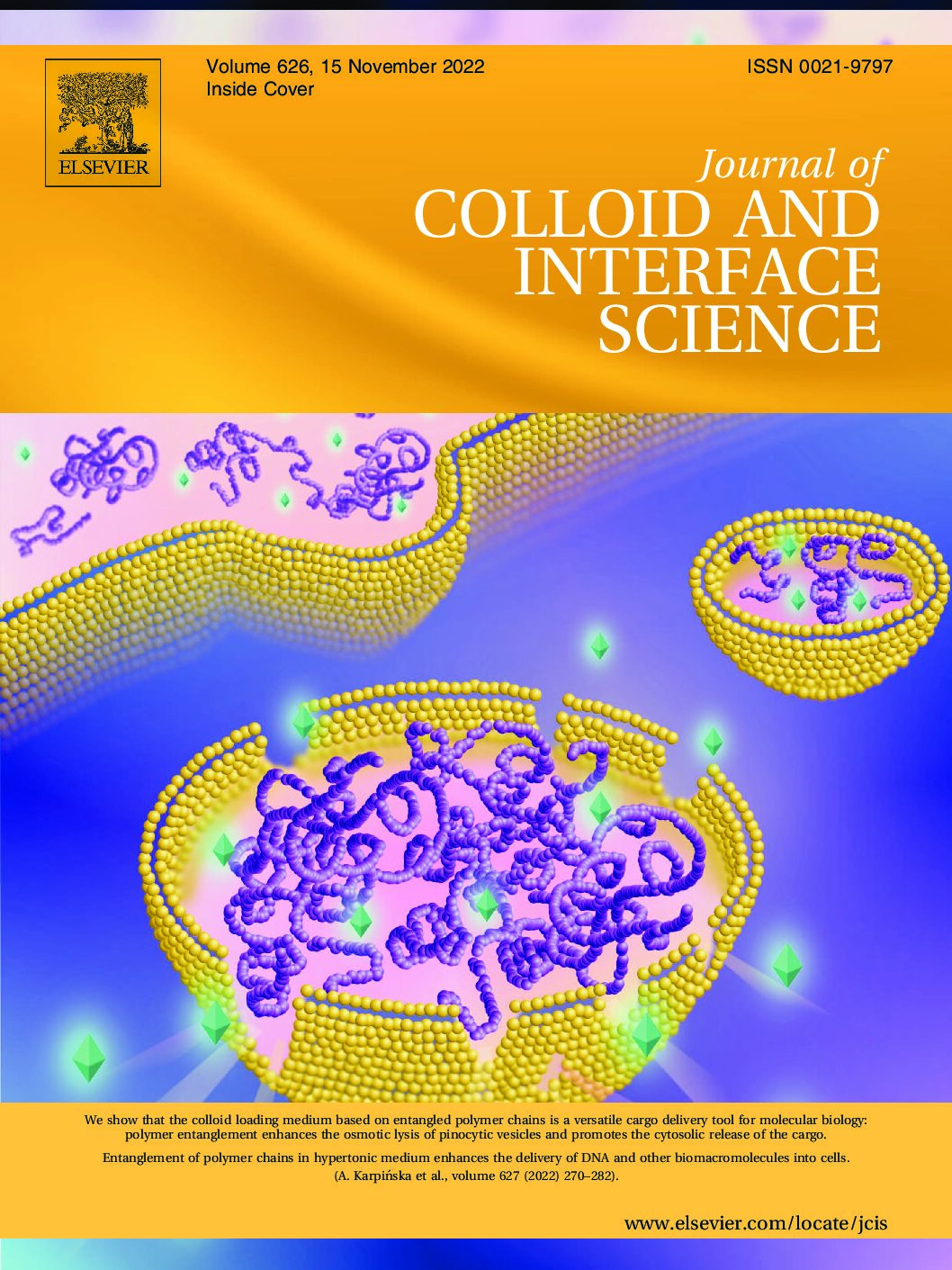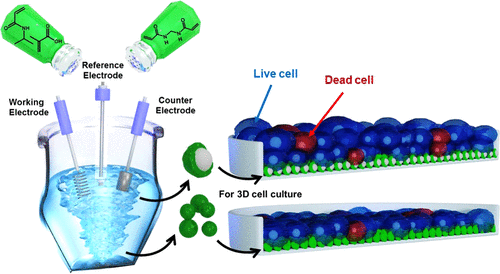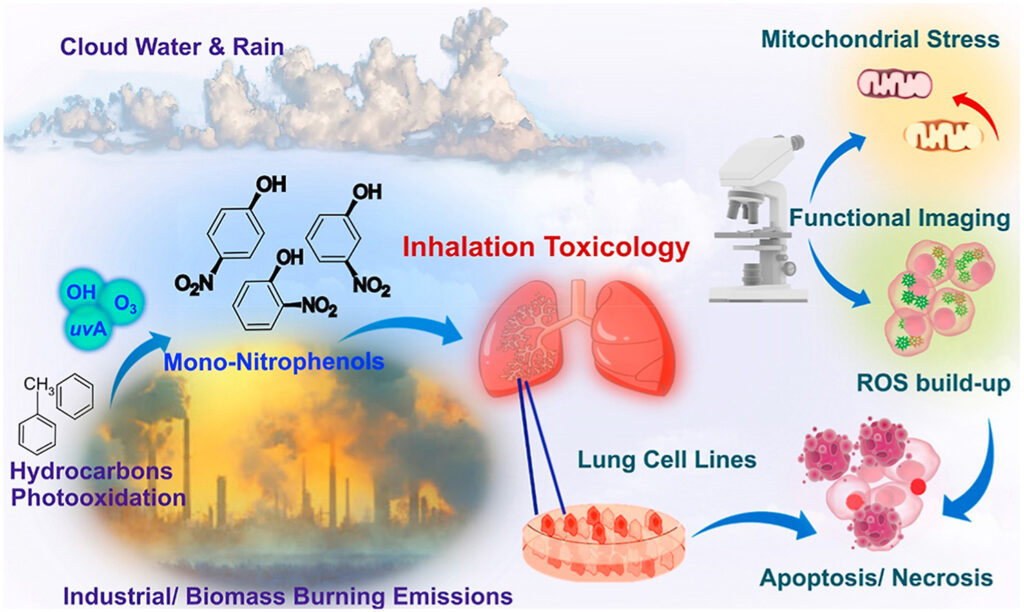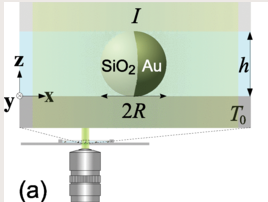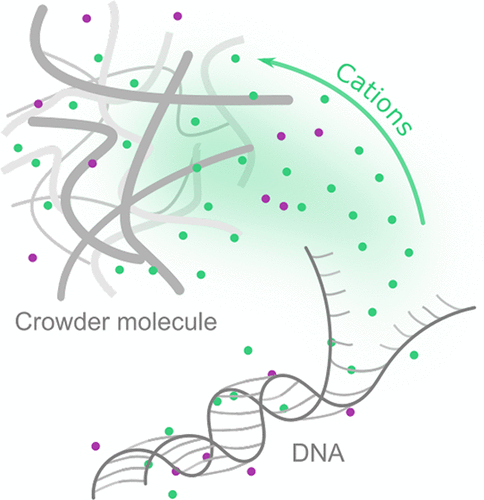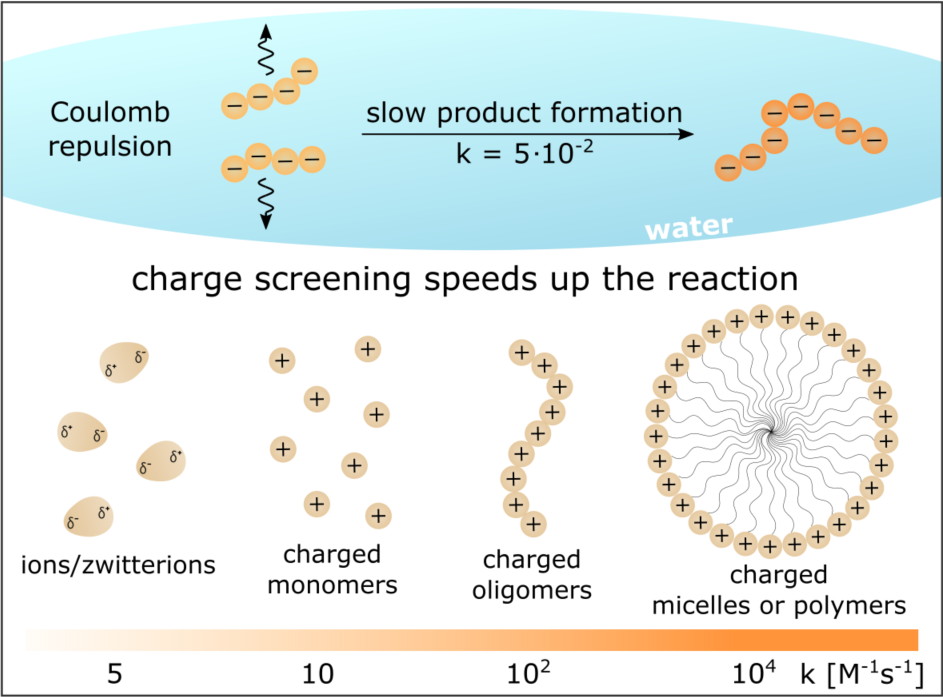
Effective screening of Coulomb repulsions in water accelerates reactions of like-charged compounds by orders of magnitude
A. Kowalski, K. Bielec, G. Bubak, P. J. Żuk, M. Czajkowski, V. Sashuk, W. T. S. Huck, J. M. Antosiewicz & R. Holyst
Nature Communications, volume 13, Article number: 6451 (2022)
The reaction kinetics between like-charged compounds in water is extremely slow due to Coulomb repulsions. Here, we demonstrate that by screening these interactions and, in consequence, increasing the local concentration of reactants, we boost the reactions by many orders of magnitude. The reaction between negatively charged Coenzyme A molecules accelerates ~5 million-fold using cationic micelles. That is ~104 faster kinetics than in 0.5 M NaCl, although the salt is ~106 more concentrated. Rate enhancements are not limited to micelles, as evidenced by significant catalytic effects (104–105-fold) of other highly charged species such as oligomers and polymers. We generalize the observed phenomenon by analogously speeding up a non-covalent complex formation—DNA hybridization. A theoretical analysis shows that the acceleration is correlated to the catalysts’ surface charge density in both experimental systems and enables predicting and controlling reaction rates of like-charged compounds with counter-charged species.

